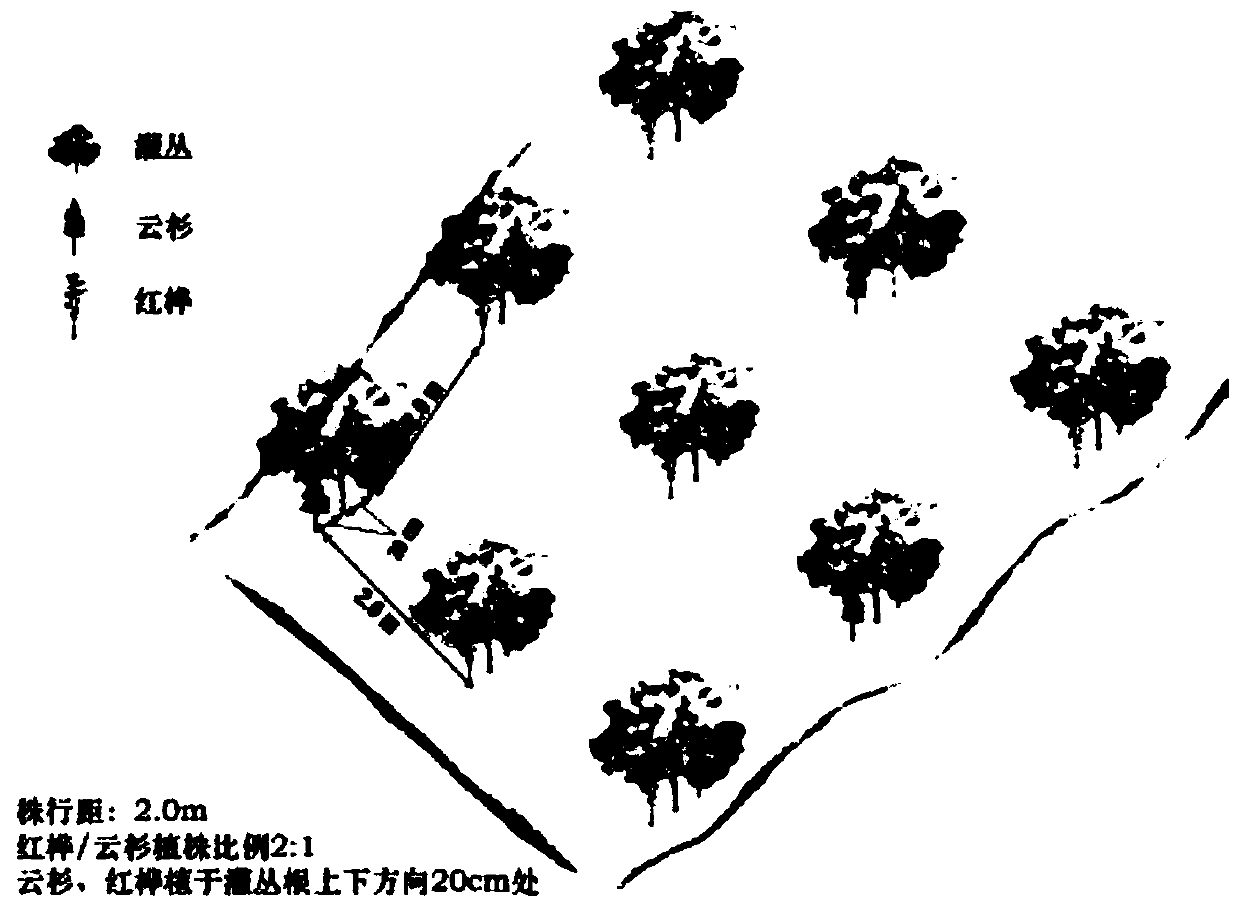Low-cost rapid forest establishment restoration technology for subalpine degraded forest
A technology and fast technology, applied in application, cultivation, agriculture, etc., can solve the problems of slow natural growth of tree species, slow natural succession and recovery process of secondary shrubs, and large workload, so as to promote vegetation restoration and improve landscape. pattern, the effect of reducing economic costs
- Summary
- Abstract
- Description
- Claims
- Application Information
AI Technical Summary
Problems solved by technology
Method used
Image
Examples
Embodiment
[0041] Implementation location: in the subalpine secondary shrub forest at Zhegu Mountain, Li County, Sichuan Province, at an altitude of 3,800 meters.
[0042] 1. Soil preparation: carry out land preparation in October. Select a suitable secondary shrub, and dig down in a point-like manner, digging in the up and down direction of the aspect line of each secondary shrub, in the distribution area of its root system, and at a distance of 20cm from the main root of the secondary shrub Pit, the length, width and depth of the pit are 30cm×30cm×30cm respectively, the distance between the pits is 2m, and a layer of humus is covered at the bottom of the pit.
[0043] 2. Seedlings: Spruce seedlings are 5 years old and the plant height is about 30cm; red birch seedlings are 2 years old and the plant height is about 50cm. Both spruce and red birch are seedlings, and the seedlings should be raised with permanent soil, and the seedlings should be prevented from dehydration during transp...
PUM
 Login to View More
Login to View More Abstract
Description
Claims
Application Information
 Login to View More
Login to View More - R&D Engineer
- R&D Manager
- IP Professional
- Industry Leading Data Capabilities
- Powerful AI technology
- Patent DNA Extraction
Browse by: Latest US Patents, China's latest patents, Technical Efficacy Thesaurus, Application Domain, Technology Topic, Popular Technical Reports.
© 2024 PatSnap. All rights reserved.Legal|Privacy policy|Modern Slavery Act Transparency Statement|Sitemap|About US| Contact US: help@patsnap.com








